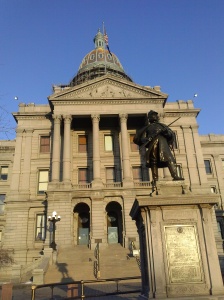This time of year, hockey fans are obsessively checking the chances of making the playoffs for each team. An interesting quirk of the NHL is that it awards two points for a victory and one point for a loss in overtime or a shootout (and zero points for a regulation loss). This is a throwback to the previous system, in which games could end in a tie if the score was deadlocked at the end of regulation, with each team picking up a point. So in a sense, the overtime/shootout system is kind of a hybrid… once 60 minutes are over and the score is tied, both teams are guaranteed one point, as in the old system. But now, they keep playing until a winner is decided, who still picks up the maximum two points possible for the game. This creates an interesting “non-fixed sum game” in which teams not playing in the game, but watching the standings, might root for an outcome in which they don’t care who wins, as long as it is decided in regulation (avoiding a so called “three-point game”)! Also, there is a strong incentive to play conservatively late in the third period if tied, since you can lock down that sure point just by not giving up a goal. By the way, chess is a “fixed sum” system, since there is 1 point for a win, 0 for a loss, and 1/2 to each player for a draw – so the sum is always 1.
A strange effect is the different value of goals depending on whether your team is tied or behind at the end of the game. Consider the “point value” of a goal in a fixed sum system [two points for a win, one for a tie] during the final second of regulation. If you are tied, before the goal your expectation was to tie (1 point) and now you will get the win (2 points), netting a 1 point increase for your team. The same will be the case if you are behind by one, and score the tying goal in the last second (1-0 = 1). However, in the NHL, not all last-second goals are worth the same. If you are tied at 59:59 of game time and net the game-winner, your expectation goes up to 2 from 1.5 (one for the sure point for making it to overtime, plus 1/2 for the 50% chance of getting the additional point in extra time). But, if your team is down by one (with your goalie pulled, presumably, in desperation) and you get the equalizer, in addition to being a hero, you will add 1.5 points to the teams expectation value, from zero to 1.5, as explained before… Three times more than a game winner! Getting a point and the chance to play on for the second is quite a prize when the threat of a regulation defeat, a zero points, was looming.
In major league soccer, there is also a non-fixed-sum system [3 points for a win, 1 for a tie, to encourage playing for the win], but the value of goals is somewhat more even, but now it is more valuable to get the go ahead goal, which is worth 2, twice as much as the equalizer, worth just 1.






